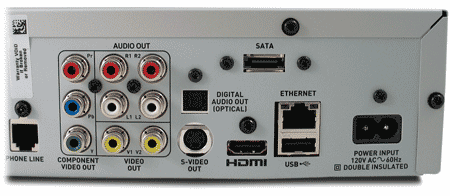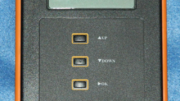Not that it was ever “real” support, I suppose.
After hearing reports that the latest crop of HR54 and HS17 DIRECTV Genies were coming without eSATA ports, I did a little digging. The eSATA ports look to be gone on the latest manufactures, and that means eSATA support is officially on the endangered species list.
A quick history of eSATA

eSATA is really just a way to connect a hard drive that should be inside your device. It was viewed as a quick way to connect external hard drives back in the days when USB was far too slow for that purpose. However, it never really took off for computers. USB 2.0 hard drives were deemed “fast enough” and it got harder and harder to find retail hard drives with eSATA connections. The technology is almost completely unused in the world of computers today. All hard drives still connect using SATA, but only inside the case. USB or Thunderbolt is used for outside connections.
DIRECTV’s eSATA support

eSATA first debuted in 2006 in DIRECTV’s HR20 DVR, the forerunner of all HR series DVRs that have come since. As you can see that device was just chock-full of different outputs for things we don’t care about today like phone service and SD video. Almost from the very start, eSATA drives worked with the DVRs in an “unsupported” capacity. Connect a drive, if it works it will replace the drive that’s inside the DVR. If it doesn’t work, well, you’re on your own.
That sort of mentality continued for well over a decade as DIRECTV and AT&T reps officially said there was no support for eSATA. However, those who used it found that it did work, and that it did not cause any problems in general.
But… not anymore.
There have been recent reports of problems with the latest AT&T/DIRECTV software and eSATA. And now, there is new hardware that has the port blocked off in some way. It’s hard to know without having one on site if that is just a plastic plug or if the port is completely gone. Unofficially, I have been told that fewer than 1,000 people of AT&T’s 24-million-plus customer base were using the eSATA feature on national release software. While it’s no fun if you’re one of those people, when you look at the numbers and the potential cost of testing this long-“unsupported” feature, I do get it.
What should you do if you’re using eSATA now?
This is going to be a hard pill to swallow. If you’ve been storing years and years of content on your eSATA drive, it’s time to start thinking differently. Offload it if you can using video capture cards, or watch it, or think of a different way to get it. If you’re just using it as extra storage, this is a perfect time to start watching stuff you have stored.
One day you will wake up and your DVR will have updated and the eSATA drive will have stopped working. You may get an on-screen error or the internal hard drive will just take over… it’s hard to know since this isn’t something AT&T is even testing. Either way, you should plan to get things done on your schedule. Get everything off that eSATA drive and go back to using the internal drive by disconnecting it.
I realize that’s not the answer you want, especially if there’s a lot of content on your drive that you thought you’d have access to forever.
Will AT&T allow USB hard drives?
HR54 DVRs do have USB 2.0 ports, and HS17 Genie 2s have USB 3.0. USB 2.0 is probably fast enough for this purpose and USB 3.0 certainly is. However, there’s no reason to think that any official USB 3.0 support is coming. DIRECTV, then AT&T, has always intentionally limited the use of the USB port to discourage hacking. I don’t see that changing, especially given the fact that so few people actually use the feature.





